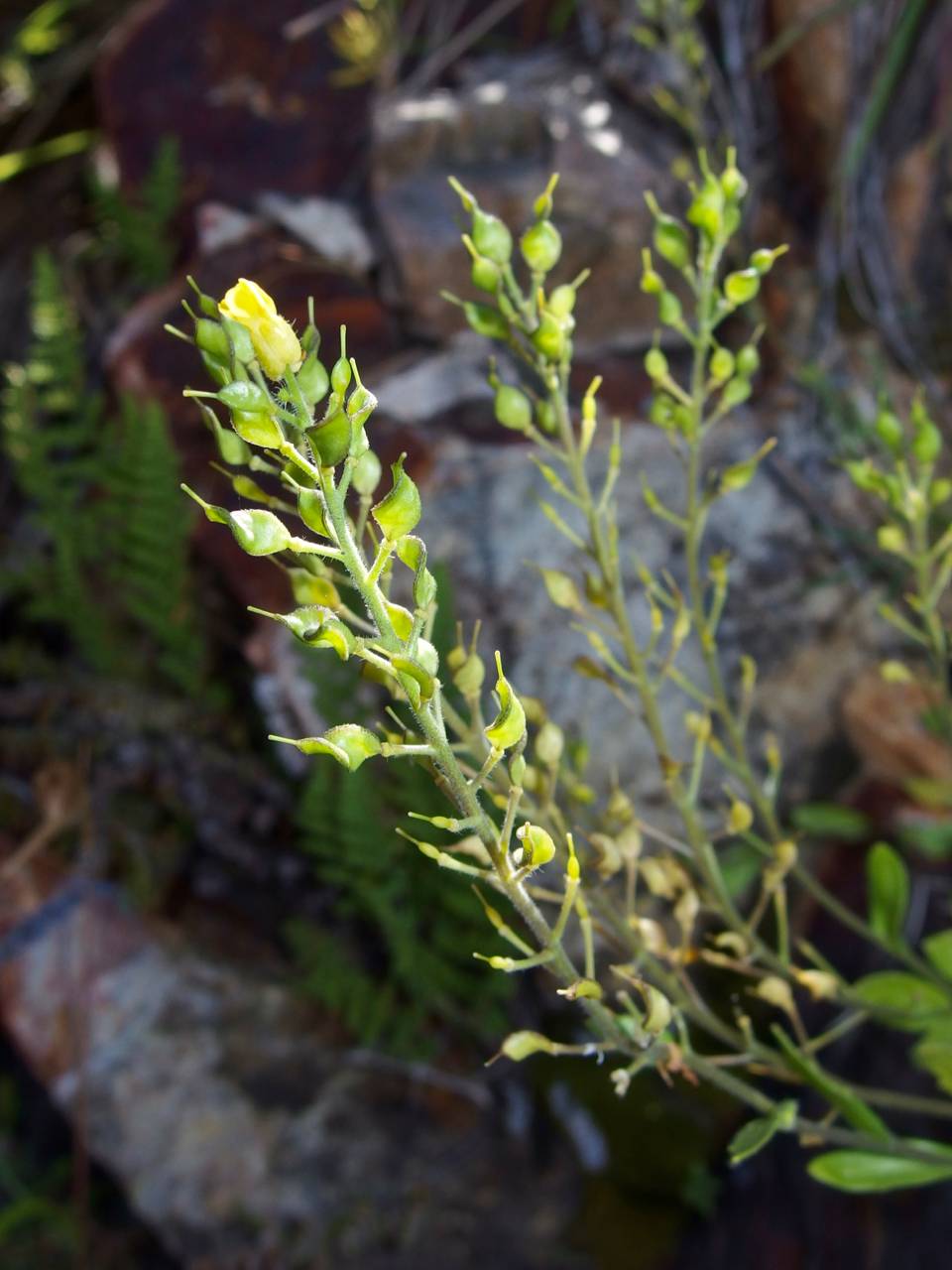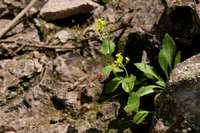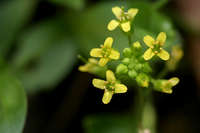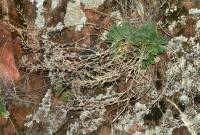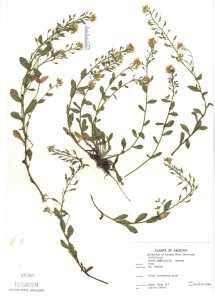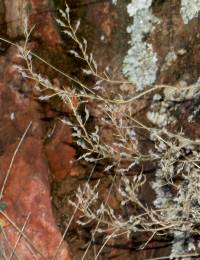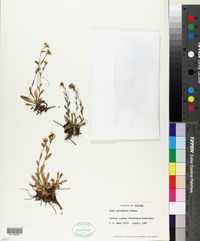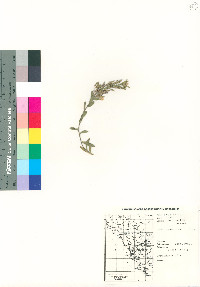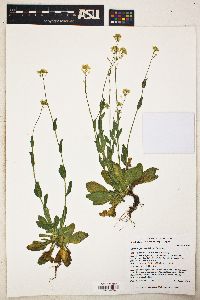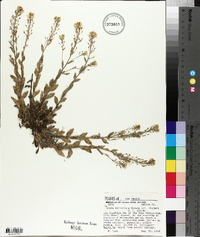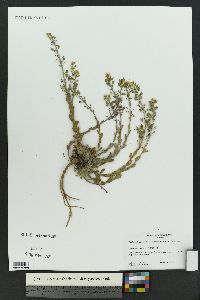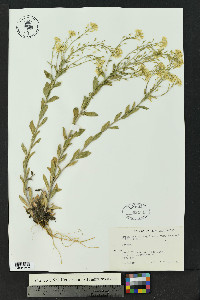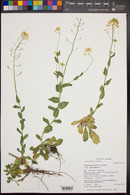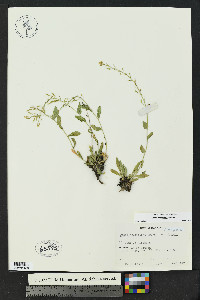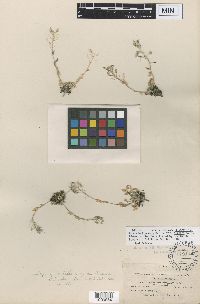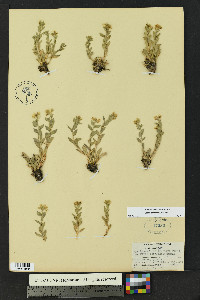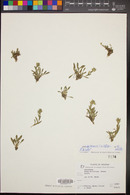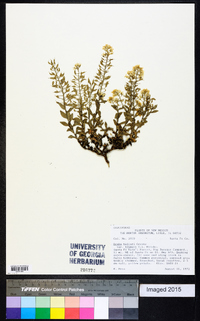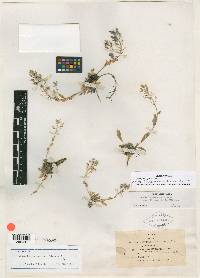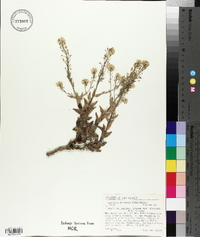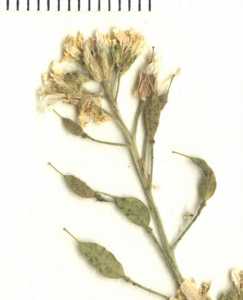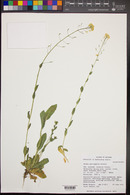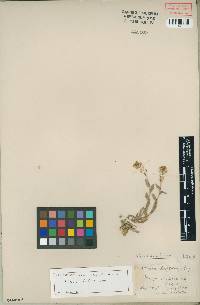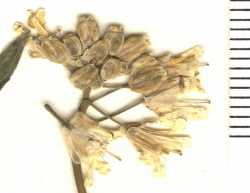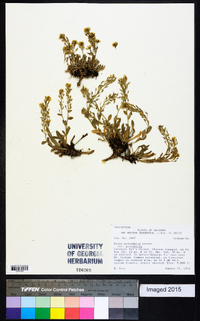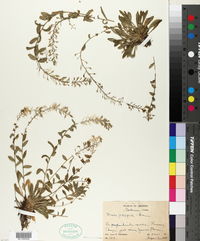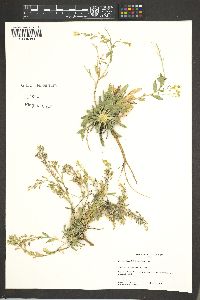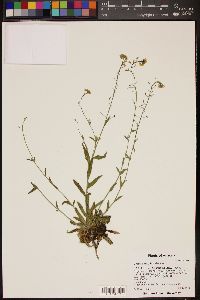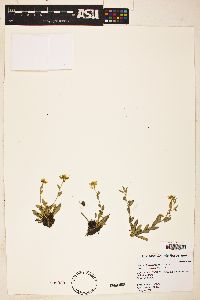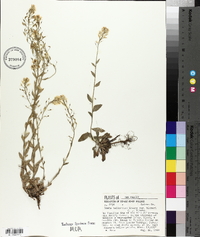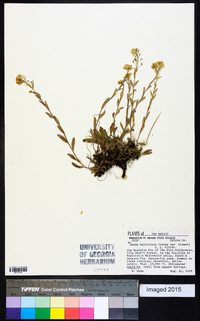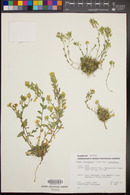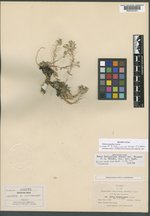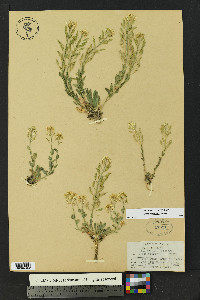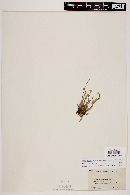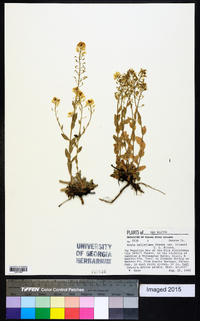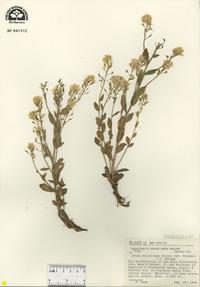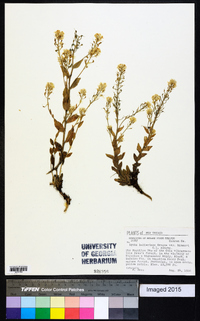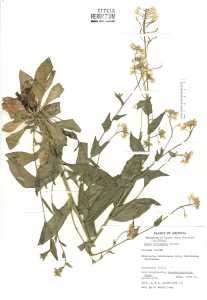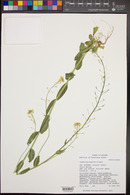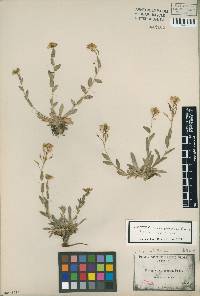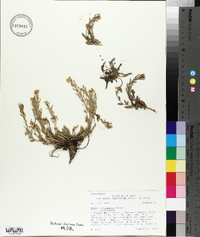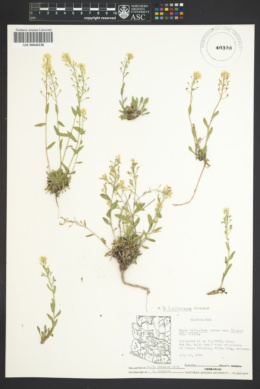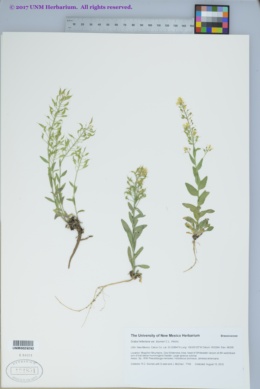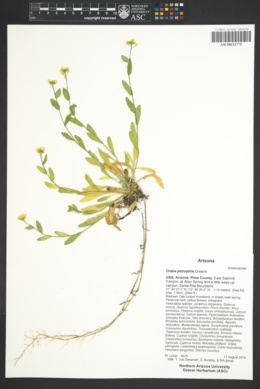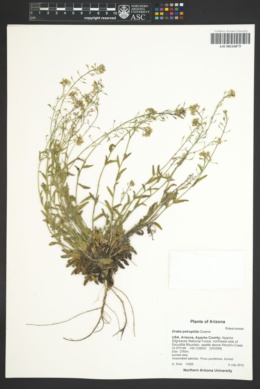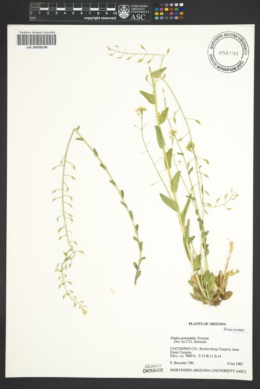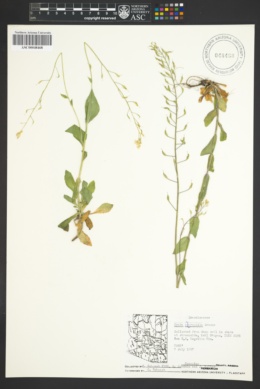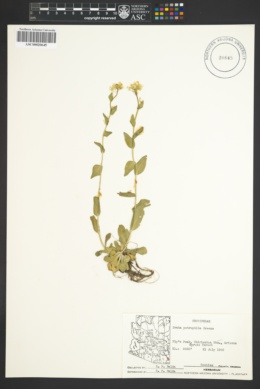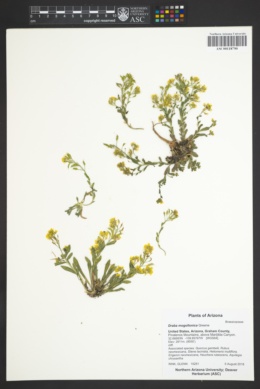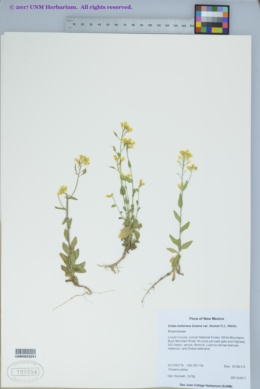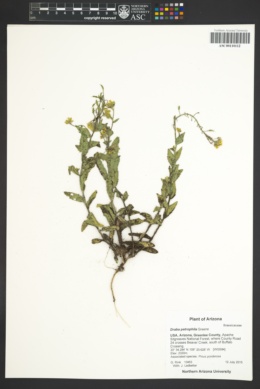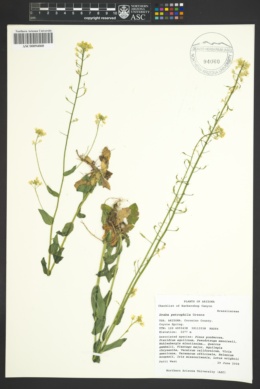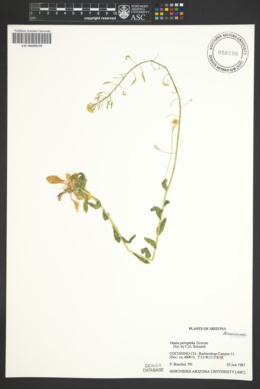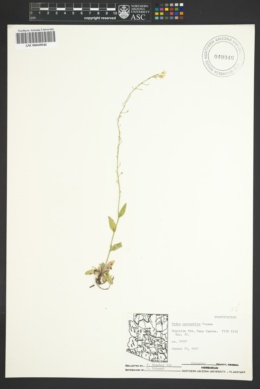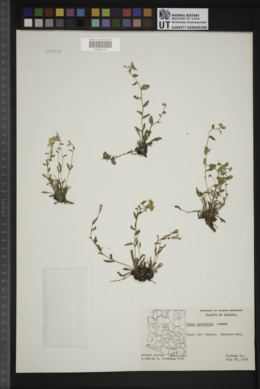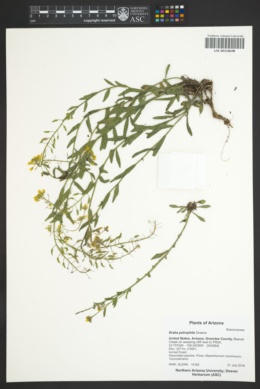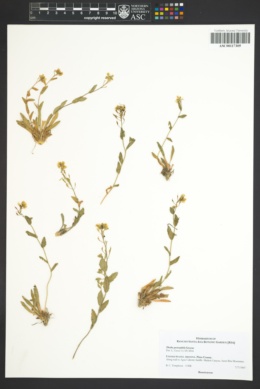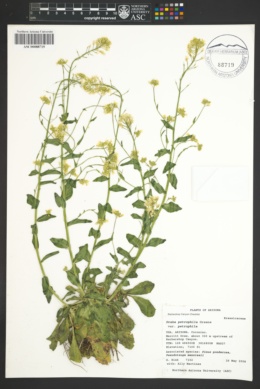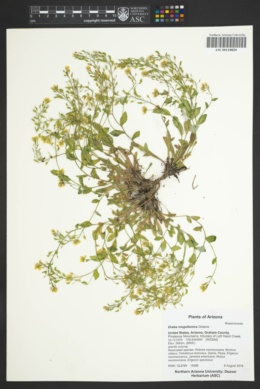Draba petrophila
|
|
|
|
Family: Brassicaceae
Blumer's draba, more...Santa Rita Mountain draba, Santa Rita Mountain Whitlow-Grass, Santa Rita Mountain whitlowgrass, Santa Rita whitlow grass
[Draba helleriana var. blumeri C.L. Hitchc.] |
Perennials; (cespitose, long-lived); caudex simple or branched (covered with persis-tent petioles), not scapose. Stems usually unbranched, rarely branched, 0.3-1.9(-2.8) dm, moderately to densely hirsute throughout, trichomes simple, 0.2-1.3 mm, with short-stalked to subsessile, cruciform, 0.02-0.4 mm, and 2-rayed ones, 0.3-0.9 mm. Basal leaves rosulate; petiolate; petiole ciliate, (trichomes simple, 0.4-1.5 mm); blade oblanceolate, 1-5(-6) cm × 2-5(-10) mm, margins usually entire, rarely denticulate, surfaces pubescent, abaxially with stalked, cruciform trichomes, 0.07-0.5 mm, adaxially often similar, sometimes with fewer, simple and 2-rayed trichomes, 0.4-1.3 mm. Cauline leaves 3-10; sessile; blade ovate to lanceolate or oblong, margins entire or denticulate, surfaces pubescent as basal. Racemes 10-37(-58)-flowered, ebracteate, elongated in fruit; rachis not flexuous, pubescent as stem. Fruiting pedicels divaricate-ascending, straight, 4-10 mm, pubescent throughout, trichomes simple (0.1-0.5 mm) and subsessile, 2-4-rayed, (0.03-0.2 mm). Flowers: sepals oblong, 2-3.5 mm, pubescent, (trichomes simple and 2-rayed); petals yellow, oblanceolate, 3.5-6 × 1.2-1.8 mm; anthers oblong, 0.8-1 mm. Fruits lanceolate to elliptic, often strongly twisted, flattened, 5-11 × 2-3 mm; valves puberulent at least along margin, trichomes simple, antrorse, 0.03-0.15 mm; ovules 14-24 per ovary; style 0.8-1.8(-2.5) mm. Seeds ovoid, 1-1.4 × 0.6-0.9 mm. Flowering Jul-Sep. Crevices, ledges of cliffs; 1200-2800 m; Ariz. Draba petrophila is often broadly circumscribed to include the taxon herein called D. viridis. For a discussion of the differences between these species and the closely related D. helleriana, see I. A. Al-Shehbaz and M. D. Windham (2007). Draba petrophila, in the strict sense, is known only from Cochise, Pima, and Santa Cruz counties in southeastern Arizona.
FNA 2010, Kearney and Peebles 1969, Al-Shehbaz and Windham 2007 Duration: Perennial Nativity: Native Lifeform: Forb/Herb General: Herbaceous perennial, unbranched to branched, moderately to densely hirsute, arising from a basal rosette. Leaves: Simple, sessile, oblanceolate, obovate, or lanceolate, margins entire to toothed, pubescent. Flowers: White or yellow flowers with oblong petals, borne on corymbose to elongate racemes. Fruits: Capsules densely pubescent, 2-celled, compressed and flat, often elongate and becoming twisted, seeds numerous. Ecology: Found in rock crevices, from 4,000-9,000 ft (1219-2743 m), flowers July-September. Distribution: According to FNA, Draba petrophila is known only from Cochise, Pima, and Santa Cruz counties in southeastern Arizona. Notes: Often circumscribed to D. viridis, but it is closely related also to D. helleriana. Al-Shehbaz and Windham 2007 distinguish the species as being.... Ethnobotany: Unknown Synonyms: Draba helleriana var. blumeri, Draba petrophila var. petrophila Editor: LCrumbacher, 2011 Etymology: Draba comes from the Greek drabe for "sharp" or "acrid" and referring to the burning taste of the leaves which supposedly had a medicinal value as a poultice. |

